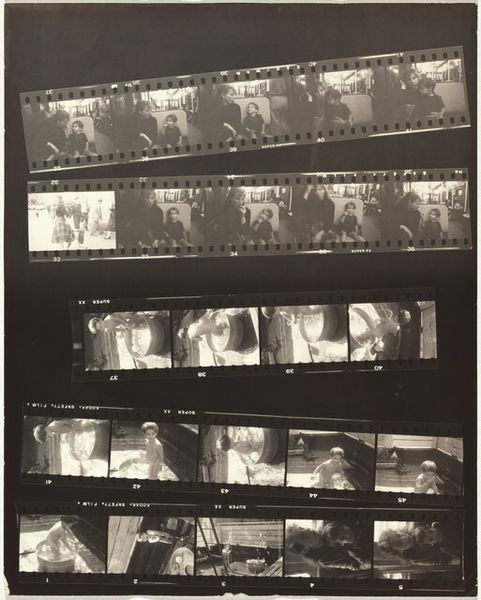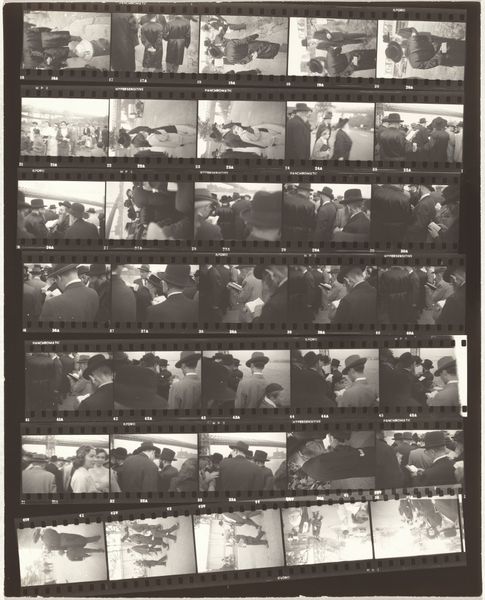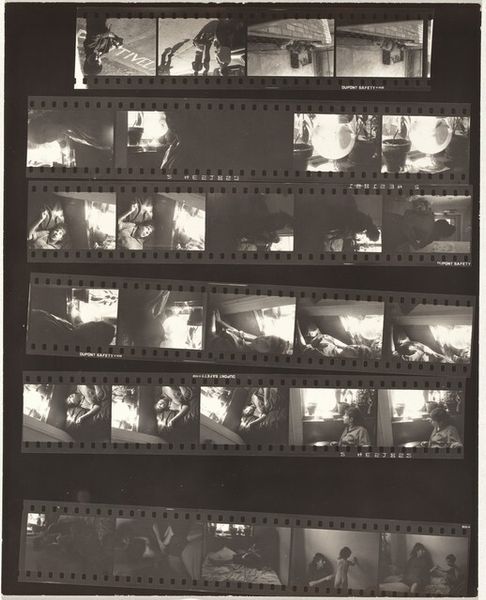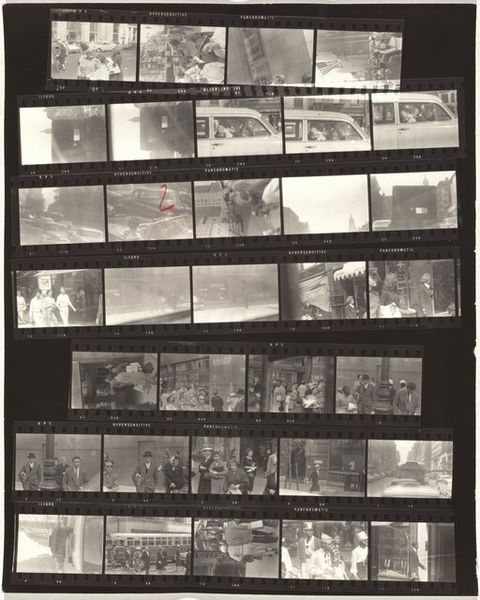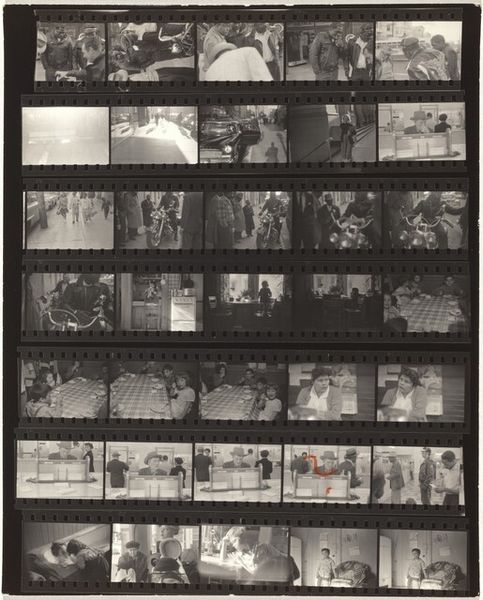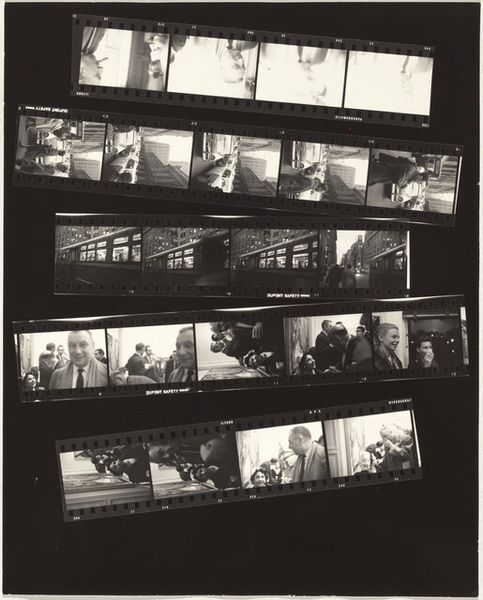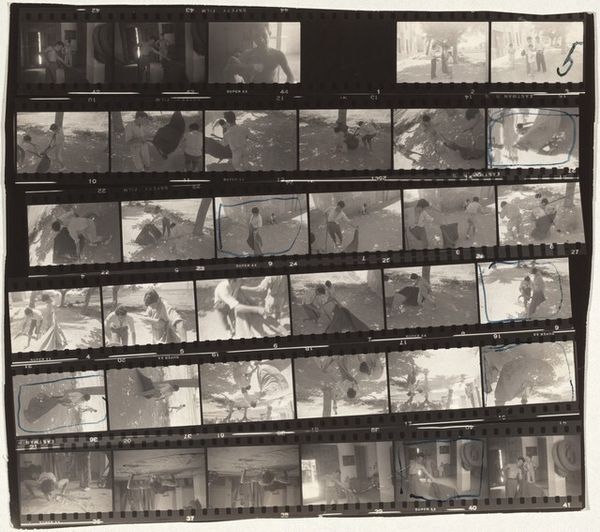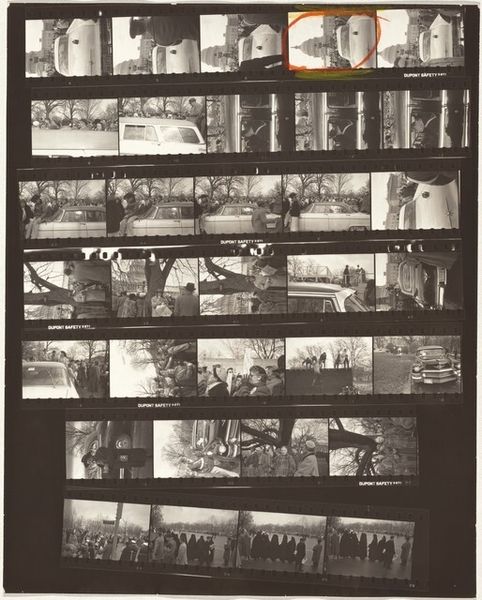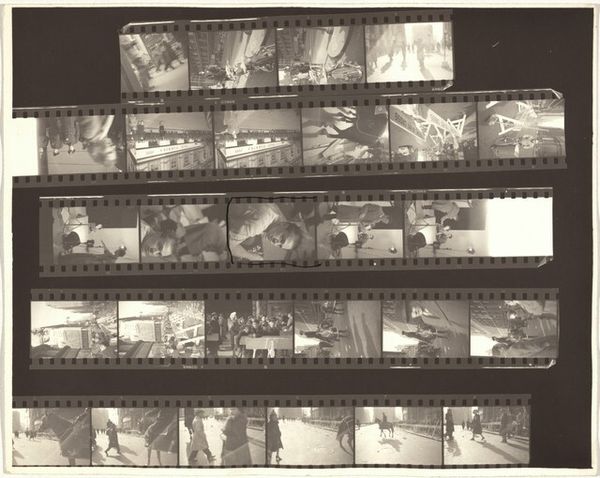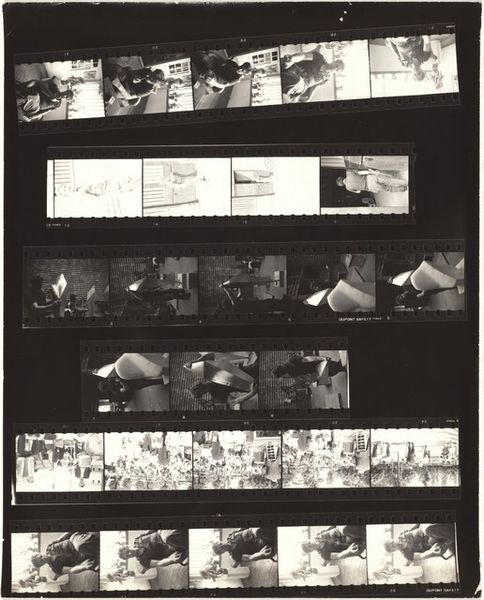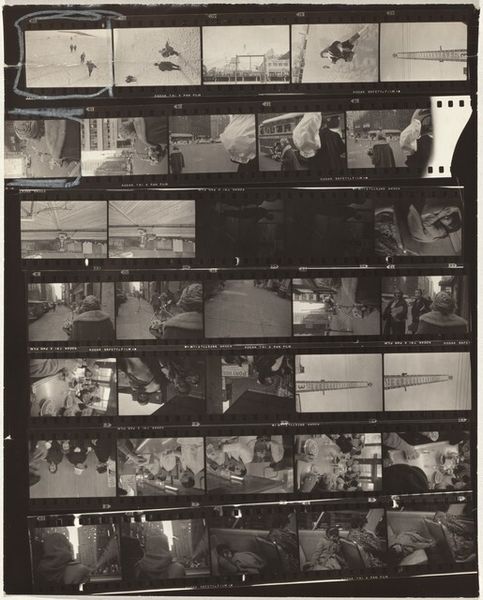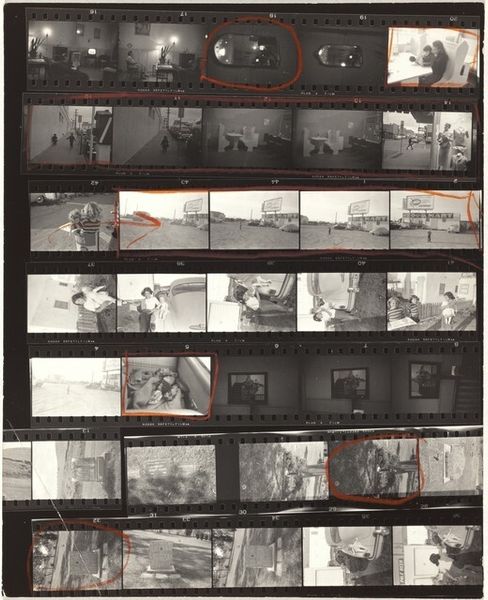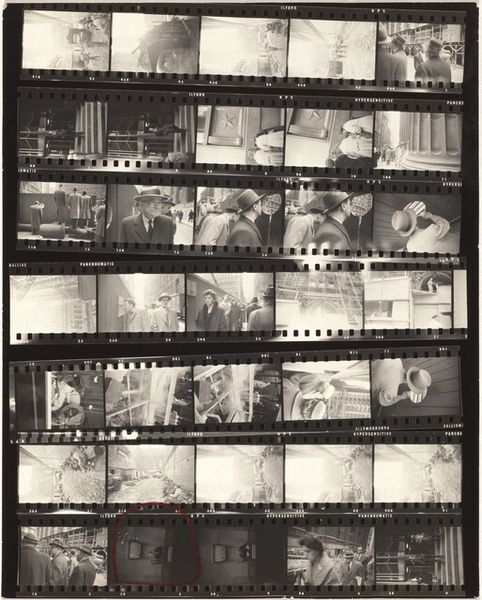
Dimensions: overall: 25.3 x 20.4 cm (9 15/16 x 8 1/16 in.)
Copyright: National Gallery of Art: CC0 1.0
Curator: This intriguing piece is titled "Early New York City no number" by Robert Frank, created in 1954. It's a photograph, a contact sheet actually. Editor: The immediate impression is one of fractured narratives, wouldn't you agree? The contact sheet format presents a staccato rhythm, a visual score almost, capturing disconnected moments of city life. Curator: Indeed. The inherent structure provides a glimpse into the photographer’s process—his editing, his selection. But viewed from a historical perspective, one can almost feel the anxieties and rhythms of post-war urban America humming beneath the surface of these candid scenes. How the imagery almost seems lifted from popular cinema, but now viewed from this gritty monochrome lens. Editor: Speaking of that monochrome palette, its tonality flattens the image, reducing everything to shapes and forms. This elevates the graphic nature, almost turning ordinary subjects like people walking or window displays into geometric puzzles. How is that black and white imagery affecting our modern interpretation of its content? Curator: Well, Robert Frank was known for challenging the sanitized image of America often depicted in the media. Here, the lack of color combined with the rawness of the contact sheet emphasizes a gritty reality, subtly questioning idealized versions of urban life prevalent at the time. The visual structure then mimics the fractured society he was observing. Editor: Do you find the overall composition pleasing? Or rather does the composition almost seek to make a statement? I ask only because a few of the frames in that matrix seem to work quite beautifully, even as a painting for example. Curator: Beauty wasn’t Frank's primary goal. The asymmetry, the slight blurriness of some frames… these imperfections, combined with the repetition and juxtaposition inherent to the contact sheet, convey an unfiltered vision. He captures what it felt like, perhaps, to experience the energy of the city during that period. It's honest and thought-provoking more than merely "pleasing." The composition isn’t seeking harmony, but disruption. Editor: Yes, quite disruptive. A potent snapshot of a specific cultural moment that still vibrates with a restless, searching energy, now captured behind glass. Thanks for expanding my views. Curator: And you have highlighted the image's more structural qualities quite well, a satisfying discussion.
Comments
No comments
Be the first to comment and join the conversation on the ultimate creative platform.
